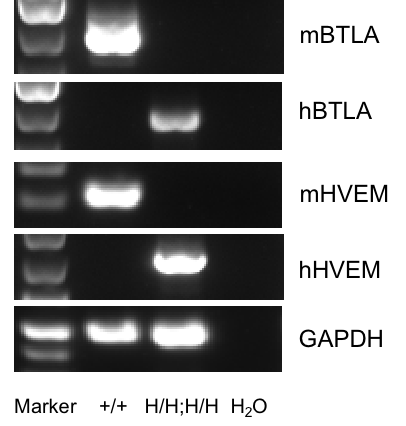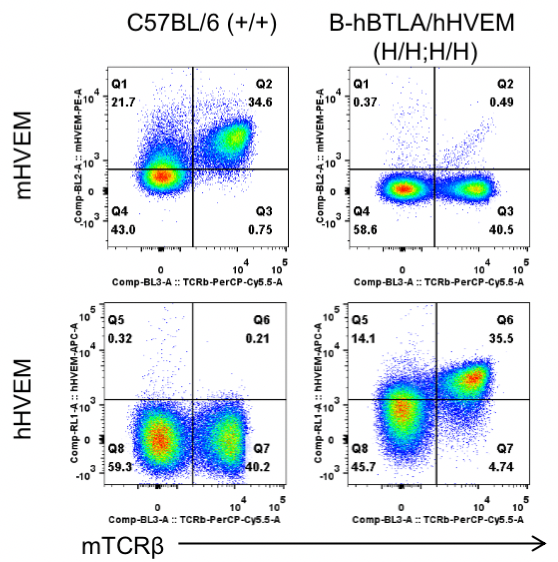
C57BL/6-Btlatm1(BTLA)Bcgen Tnfrsf14tm1(TNFRSF14)Bcgen/Bcgen • 121080

| Product name | B-hBTLA/hHVEM mice |
|---|---|
| Catalog number | 121080 |
| Strain name | C57BL/6-Btlatm1(BTLA)Bcgen Tnfrsf14tm1(TNFRSF14)Bcgen/Bcgen |
| Strain background | C57BL/6 |
| NCBI gene ID | 151888,8764 (Human) |
| Aliases | ATAR; CD270; HVEA; HVEM; LIGHTR; TR2; BTLA1; CD272; TR2; BTLA1 |




Subcutaneous homograft tumor growth of B-hHVEM MC38 cells. B-hHVEM MC38 cells (1x106) and wild-type MC38 cells (5x105) were subcutaneously implanted into homozygous B-hBTLA/hHVEM mice (female, 6-week-old, n=7). Tumor volume and body weight were measured twice a week. (A) Average tumor volume ± SEM. (B) Body weight (Mean ± SEM). Volume was expressed in mm3 using the formula: V=0.5 X long diameter X short diameter2. As shown in panel A, B-hHVEM MC38 cells were able to form tumors in vivo and can be used for efficacy studies.

B-hHVEM MC38 tumor cells growth of individual mice. B-hHVEM MC38 cells (1x106) and wild-type MC38 cells (5x105) were subcutaneously implanted into homozygous B-hBTLA/hHVEM mice (female, 6-week-old, n=7). As shown in panel, B-hHVEM MC38 cells were able to establish tumors in vivo and can be used for efficacy studies.